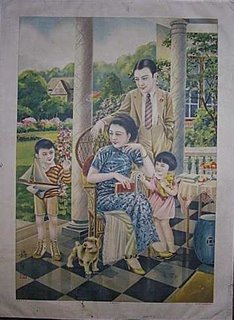
A snippet of tips (and tons more in the article) on how to see what's going on inside, by knowing a little bit more about how to approach the outside, Applying Family Systems Theory to Early Childhood Practice
http://www.naeyc.org/
1. Don’t focus on the negative. Build on family strengths and avoid labeling and allowing personal bias to influence your interactions with families. Educators will often perceive “good families” as the ones who are more enthusiastic and involved. The family who responds politely to requests but leaves day-to-day decisions and work on school matters to the child and teacher is seen as less caring and uninvolved.
2. Learn more about the cultural background of your families. Just because a student is of a certain culture does not mean that student’s family is of a given religion, does not have legal status, has a certain discipline style, or has a specific socioeconomic status (Kagan & Garcia 1991). It is critical for teachers to become familiar with the cultural background of individual students.
3. Bring lots of chairs. Be sure to have enough chairs, snacks, and materials to accommodate extended families at events and conferences. For some families, an invitation to family night includes aunts, uncles, cousins, friends who serve as family, and even neighbors (Trawick-Smith 2005).
4. Put the child’s experience first. Whether their families are disengaged or enmeshed, children need opportunities to experience who they are individually and as a part of a group.
5. Respect families’ need for control. When introducing new ideas, materials, or experiences to children, involve families as well. Also recognize that some family members did not have positive experiences with education as they were growing up. While they may display anger, hostility, or mistrust, and these may be directed at you, the source may be events from the past. It will take time and persistence to build a relationship with these families.
No comments:
Post a Comment